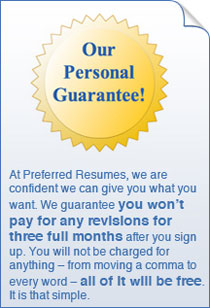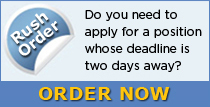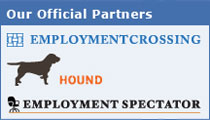The Summary of Qualifications or Profile
|
|
A section that summarizes your key attributes, experiences, and unusual skills is an important opening section of a resume. When employers receive at least 100 resumes per day for an advertised position, they do not have much time to devote to each one. Rather than just informing an employer about your history, a brief, well-written summary will highlight your relevant strengths, grab the employer's attention, and act as a hook to draw him/her into the resume and make him/her want to continue reading it in more detail. The summary can bring attention to skills that are most relevant to the position you are seeking, especially if they are not reflected by your most recent position or if you are changing career paths. The information contained in the top third of your resume is what will attract the most attention. For this reason, a summary is a great way to ensure that the top third represents everything you want employers to know about you.
A summary also will allow you to condense lengthy experience and save employers from having to weed through extensive job descriptions. If you can encapsulate your experience in a few brief sentences, it will take some of the guesswork out of the employer's hands. Then once he/she has selected your resume out of those initial 100, he/she can go back and read your job descriptions in more detail.
Additionally, if you have a few large, notable accomplishments, why not put them at the very top of your resume? If you won a notable award, went to a great school, graduated at the top of your class, worked at a prestigious company, or brought in a key client, you can increase the prominence of these achievements by listing them in the summary section. Starting your resume with "Experienced in marketing/advertising in print media, developing process to double advertising by second quarter." is sure to get an employer's attention, and you have not even made him/her look past the first line.
A summary can also reduce repetition in your job descriptions. If you find that several of your positions comprised virtually the same responsibilities, rather than repeat those responsibilities under each job heading, include them in a summary section. This will not only free up some space on your resume, it will bring more focus to the unique contributions you have made in each position.
If you find your resume lacking a certain emphasis or if you do not feel that your best or most relevant attributes are coming through, a summary section can enhance your resume. The easier you can make it for employers to quickly see your best qualities, the better chance you have of getting an interview.
A. Profile
A profile is a paragraph that gives a brief overview of your career. You can use this section to pull together each aspect of your professional history in one place, from academic information to honors and awards to practice areas to foreign language abilities. You can also highlight skills in your profile. Since cover letters often are overlooked or skimmed, using a profile section ensures that those less-tangible qualities that you want to highlight will be seen. Remember, though, that the skills you mention should be supported by your resume. If you bill yourself as a "strong negotiator" in your profile, there should be evidence of this in your job description.
B. Summary of Qualifications
This section is similar to a Profile, but rather than using it to summarize your entire career, it can highlight those specific aspects of your experience that relate to the position you are currently seeking. A Summary of Qualifications can be particularly helpful if you have dabbled in a certain area throughout your career and now want to focus on that area. For instance, maybe you have done labor and employment work "here and there" throughout your career, but it has only made up about 15% of your overall experience. If you decide that you now want to focus on that area, a Summary of Qualifications section will allow you to put that 15% in one place. Consider these two examples:
C. Areas of Expertise
Another form that a summary section can take is the Areas of Expertise section. A list of a few key areas is visually striking while, again, taking some of the guesswork out of your resume. These should be listed in bullet format so they are more easily skimmed through. Someone in a hurry can easily assess the areas in which you are experienced. The Areas of Expertise section can either stand on its own or be combined with a Profile/Summary of Qualifications section as in the example below:
D. Professional Accomplishments
Accomplishments play a major role in a resume. That's because employers want proven achievers, and the only way to bill yourself as a proven achiever is to show what it is that you have achieved. Accomplishments can often be included within individual job descriptions, but if you have a few very notable accomplishments, why not draw more attention to them by placing them in their own section? Here are examples of how that might be done:
CAREER HIGHLIGHTS
- Managed human resources, insurance, and risk management departments with outstanding efficiency, cutting costs by up to 25%.
- Advised on major, multi-year supply and inventory management agreements; convinced sales management not to execute one such agreement because fraught with litigation risk and customer not in good financial condition (customer later declared bankruptcy).
- Utilized Chapter 11 to employers' best advantage, consistently accomplishing reorganizations in record time.
- Negotiated complex technology and service agreements that saved company more than $40 million.
- Brought in $1.5 million in new business through marketing efforts.
- Received numerous individual performance awards, commendations, and bonuses.
- Devised and executed litigation strategies that consistently produced optimal results for clients.
- Invited to present seminars on effective financial management strategies at prestigious business schools.




